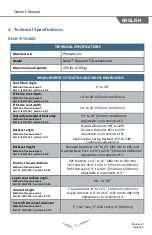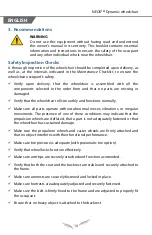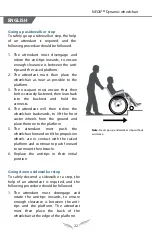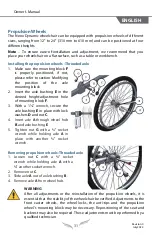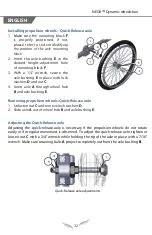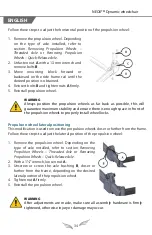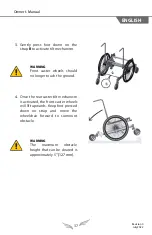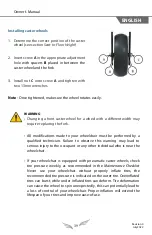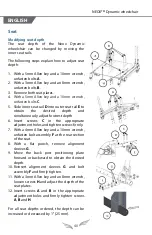
Owner’s Manual
ENGLISH
25
Going up or down a slope or a ramp
Certain precautions must be followed to safely go up or down a slope or a ramp.
• Do not descent or move up a slope that is steeper than 10 % (a 10% slope equals
one foot in elevation for every 10 feet of horizontal distance).
• Always check your surroundings to identify any obstacles or changes in surface
inclination to avoid danger.
• Be extremely cautious on wet or slippery surfaces.
• Always have an attendant behind your wheelchair when moving onto a long slope.
• Always keep your hands on the handrims when moving on a slope or a ramp, to
ensure a controlled descend speed.
• Never turn or change direction on a slope or a ramp.
• An inclined surface will impact the wheelchair’s center of balance and increases the
risk of tipping over. You must always adjust your body position to keep a steady
balance and maintain stability.
• Never stop in the middle of a steep slope.
• Never use wheel locks to slow down or stop.
• Before moving onto a ramp, make sure the wheelchair is in the center of the ramp
and that the ramp is wide enough so that the wheels to not fall over the edge.
WARNING
•
Always verify that the ramps used are compliant with the legal
standards of your region.
•
A change in surface inclination affects the effectiveness of anti-tips.
Anti-tips may not be able to prevent the wheelchair from tipping over
and/or falling. The occupant must adapt their body position to
counteract the change in the wheelchair’s center of balance.
R
e
vision 0
July
202
2

